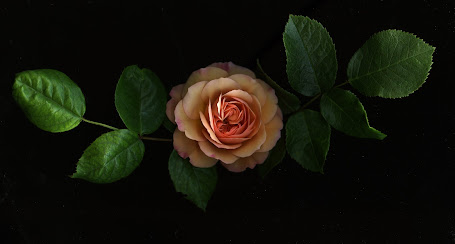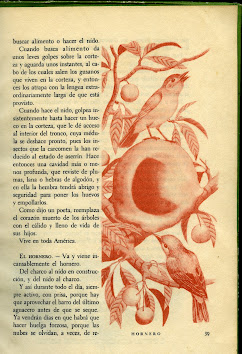El Mundo de Los Pájaros Argentinos y los Pajarones
Monday, May 30, 2022
 |
El Tero - Vanellus cayanus
|
In 1999, and for a few years, Argentine artists Nora Patrich,
Juan Manuel Sanchez and I worked on a joint project that we called Argentine Nostalgia.
We worked with a beautiful Argentine woman called Linda Lorenzo.
Our project circled on the rosy past that any expatriate
will have. Linda Lorenzo became our canvas for all those memories. One that was
dear to my heart was the Argentine bird.
My love for them began on December 7, 1950. I was 9 years
old and I know this because the book that was given me on that day of my First Communion
has that date.
For the next 3 years my parents would send me to the camp
(and Anglo/Argentine word for “el campo”) or the plains we call the pampa. This
happened during the hot Argentine summer in January. I would go to remote
estancias (Argentine word for ranch).
 |
December 7 1950
|
It was there that I would ride a horse and gallop in the
flat pampa in which the only interruption for a 360 degree horizon was that
large tree (not a tree botanically) called an Ombú. I would gallop after what
we called avestruces (ostrich) but were really a South American Ñandú.
Both that ñandú and an elegant bird called a tero had the
same protection plan of running away from me as far from their nest as
possible.
 |
Ñandú - Rhea americanus
|
A much more relaxed bird was the plain looking hornero
(baker bird) called that because it would build adobe nests shaped like a baker’s
oven on the top of fence posts. It had a tight curve to discourage snakes.
 |
El Hornero - Furnarius rufus
|
In one my campo Januaries our host (there were several of us, girls and boys) had a revolver. He would take us to a nearby forest and he would shoot
lechusas (owls). It was then when we ate lechuza stew.
One year I brought back a young tero and for a few months he
was our guard bird in our Coghlan garden. He would make sounds close to
tero-tero. But our large brown poodle broke his wings and we had to put him
down.
We also had a South American green parrot called Carlitos
who would on any noise made by someone knocking on our gate, he would call out.
“¡La basura, la basura!” or “The garbage, the garbage!”
We left him behind in 1953 with our live-in house maid
Mercedes Basaldúa. When I returned in 1965 to do my military service in the
Argentine Navy, Carlitos was very much alive.
 |
Federal - Amblyramphus holosericeus
|
In 2002 my Rosemary and I took our granddaughter
Rebecca who was 11 to Buenos Aires. In a
visit to the Buenos Aires Zoo (now closed and gone) I took her to the large cage with a couple of condors. By a stroke of luck one of the birds flew from one end to another
and dropped a feather. I was able to retrieve it. I had it framed and gave it
to Rebecca as an Argentine souvenir.
It is impossible to describe the sheer pleasure of galloping
on the Argentine pampa.
Lucky I was that my parents got rid of me for a month on
those Januaries.
The only way I could convey the beautiful red breast of the Federal and satisfy community standards with Linda Lorenzo was to have her pose in a bright red bra.
As in all other languages words in fashion disappear quickly. In the 1950s and 60s a pajarón (literally means a large bird) was used a mild insult that would convey that you were an idiot.
Tribbling Trouble With Roses
Sunday, May 29, 2022
 |
The roses featured in today's blog - 29 May 2022
|
My
grandmother often told me, “Cuando el diablo no tiene nada que hacer con el rabo
espanta moscas.” This translates to, “When the devil is bored he swats
flies with his tail.”
Right now, 29 May 2022 I have nothing to do that I have to
do. I have no jobs, prospect of work (I do not need to, as thanks to Rosemary, I
am financially independent and secure) or any pressing obligations except
feeding my cats Niño and Niña, walking with Niño around the block and tending
to the garden.
My daughter Hilary visits once a week so I have to prepare (because I want to and like to) a
good meal for her. And that’s it.
Then there is that garden with which I have an ambivalent
relationship. It is lovely and so many of the plants remind me of Rosemary. She
planted many of them; we bought many of them together; so many are her
favourites but in the end I grieve that I and her plants are alive and she is
not.
Writing this blog is my version of swatting flies.
Today I saw a problem that reminded me of going to the dog
pound with Rosemary in Mexico around 1973 when our Antonio, our boxer died.
There was a cage with all these dogs barking at us for attention. There was a
gray, very quiet little dog with some Airedale in her that stared at us with
melancholic eyes. So we took her home and named her Mouche as she was the
colour of a fly.
Today’s problem was that there were many “barking” roses and
one that was not.
What was I going to do? I can only write one blog per day
and I don’t have my friend Tim Bray’s
intelligence to have a blog like his Ongoing in which he writes, without
dates when he wants to.
To solve this problem and seeing that I can only swat flies
one at a time I am writing this blog in sections on today’s date.
 |
Rosa 'Leander' 29 May 2022
|
The first rose is Rosa ‘Leander’ which was an English Rose we had in
our Kerrisdale garden that Rosemary adored, particularly as it did well in a
shady spot. It was a rare rose that was shade tolerant. It died when we brought
it to our Kits garden. Rosemary became upset. A friend of hers offered to give
her a rose she thought was Leander. It was and Rosemary beamed. I have written
about this rose many times.
Leander to Rosemary's Hero
The second rose is an interloper. Growing in the pot with
Leander was this single rose. It is probably a cane coming out from the
original root stock on to which Leander was grafted. Should I cut this cane? I
have decided to keep it as I deem it a survivor.
 |
Mystery rose - 29 may 2022
|
The third rose is a pleasant discovery. For a couple of
years I identified it as the English Rose Rosa Benjamin Britten’. Check this recent
blog. I was wrong! I have another pot with Rosa ‘Charles de Mills’. It is in bloom right now
but the blooms look disfigured and I suspected it had to do with the terrible
spring. I was wrong. Benjamin Britten is Charles de Mills and I should have
known. Besides its intense colour a singular feature is that it has a thin edge
if seen from the side. It is as if someone with a sharp razor sliced part of
the top.
 |
Rosa 'Charles de Mills' 29 May 2022
|
The mystery now is where is Benjamin Britten and what is
that rose with the Charles de Mills metal ID?
Lastly I have a second interloper that is very lovely. I
have two roses,both Gallicas, Rosa ‘James Mason’ and Rosa ‘La Belle Sultane’.
Both are intensely red and have very yellow and prominent stamens.
 |
Rosa 'Dr. Huey' 29 May 2022
|
So does Rosa ‘Dr. Huey’named after a 19th century
Philadelphia dentist with multi talents. This rose blooms only once
(non-remontant in rose parlance like the Gallica James Mason and La Belle Sultane.
It is fragrant and quite healthy in my garden. How did it get to our garden?
The fascinating story of Dr Huey - the Man
Before Rosemary died she often went to the old house (I
could never find the heart to go with her). In one of the last times she noticed
a rose bush still in the back lane. With a spade she was able to dig it out and
brought it home. When it bloomed it was this red rose with yellow stamens. We
only had two in the old garden. What could this one be?
The answer is simple. For many years the roses sold in
Vancouver came from California and Dr. Huey was used as a vigorous root stock
to graft rose on to. Our rose must have died in that back lane and from it
emerged a victoriously surviving and lovely Dr. Huey!
And that is special as it came to Kits via Rosemary and her
spade.
And for anybody curious about the rose stem with large and sharp prickles in the first photo read here.



















